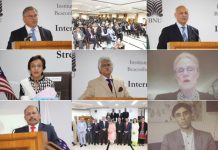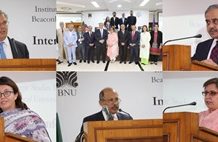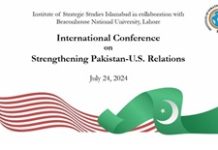A very tiny minority in India or Pakistan would oppose the coming together of these two countries after the conflict and climate of hostility that has persisted for decades. I may be wrong, but this is my reading of popular attitudes in both the countries. The most important thing to study and reflect on is how the people of Indian and Pakistani Punjab think about the future. It is no longer important to think about the past — that is gone and is better buried in the dust of history.
There are many divergent views on how India and Pakistan can achieve peace, harmony and establish true friendship and become economically integrated. The question is, where to start? The simple answer is economic openness; full, complete, total and unhindered on both sides. The objective must be to recreate an India-Pakistan market system that existed around the time of our independence. Some may rightly argue that too much water has passed under the bridge, times have changed and we are not the same economies that we were once. This, in my view, is more reason for Pakistan to seek economic partnership with India than with other neighbouring countries. We can perhaps, progress more by integrating our economy with India’s perhaps more than we can by seeking close economic cooperation with China. Our geography and location is such that we don’t need to move in one direction; rather, we can and should look towards India as much as we do towards China.
————————————————————————————————————————————————————————–
In terms of popular perceptions and thinking about the future of our relationship with India, there is a big change in Pakistani Punjab
————————————————————————————————————————————————————————-
What about our national security and our problems and disputes with India? There is a counter-question in my mind. By not opening up our market for Indian goods and reciprocally not getting access to the Indian market — the market of the second largest and one of the fastest growing economies — would those problems be solved? Trade and economic openness is in our interest. The logic of trade and regional integration is that all benefit from it. Every developing country that has made transitions in economic development has done so by regional cooperation using a framework of a regional organisation like the EU and ASEAN. Pakistan cannot do it differently.
In terms of popular perceptions and thinking about the future of our relationship with India, there is a big change in Pakistani Punjab, the largest province of the country. Historically, anti-India sentiments have been pretty strong here owing to much communal violence during Partition, the Kashmir dispute and the wars with India. The Punjab mood at the popular level is no longer hostile towards India. There is also a big change in perception on the other side of the border.
In my view, language, culture and history, if the narratives are right and rational, can unite communities more than religion. Religion can be as divisive and conflictive as it can be a force for harmony but that would depend where and in which age and time we live in.
Punjab, across the divided line, has a rich culture, a long history and a common language and folklore. I share the view that the two Punjabs can bring India and Pakistan much closer and that too very quickly. How can this be done? There is a great script in the joint communique, the first ever between any Indian state and a Pakistani province for a brave future. The bottom line is openness — students, interns, academics, intellectuals getting into the research institutes and universities of each Punjab. There is so much we can learn from each other’s experiences in the wider areas of agricultural research, from land and water management to dairy farming.
Tailpiece: Much will depend on pragmatism defeating dogmatism and burying the ghosts of history.
Views expressed are of the author and do not necessarily reflect the views of ISS or of the Government of Pakistan.













